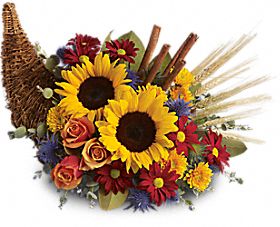Typically, "doom and gloom" grabs the headlines. Incidents of things gone bad triggers predictions that all is going to hell in a hand basket and then the blame game begins. Nary (love a good "nary") a day goes by without predictions, backed by some one's irrefutable data: the globe is warming, species are becoming extinct, and "the man" is responsible. Hysteria is whipped and in the end it makes mostly good news print and not so good facts.
Top scholars try to figure out why things are happening. Often lacking any real reasons, they fall back on "scare tactics". Then nature, in it's slow and continuous cycle, proves it can't be predicted quite as surely as man would like to pretend.
As species appear to disappear from the earth, new ones are discovered. I especially love blaming global warming on every storm or weather event. Although I don't especially discount some theories of global warming, I do think it has become the reason given for everything we simply can't explain. Our scientific ego doesn't allow us to simply say, "We don't know why." Well that and the whole "if there isn't any news, the media must now make something into news."
And what got me going on this little editorial tidbit? Monarch butterflies are returning to Southern California in record high numbers this year. After several weather events where many (some estimate 80-90 percent) froze while wintering in the south, the Monarch had hit the doom and gloom media stories.
Theories for the decrease: Perhaps loss of milkweed (the only plant on which monarchs lay their eggs), development, agriculture and drought. Then speculation: Loss of winter sites and use of pesticides in gardens and farms.
Speculation for the increase is perhaps more rain which caused more milkweed. Temperatures might also be a factor. Laurie Davies Adams, executive director of the Pollinator Partnership of San Francisco say, "But all these things are as speculative as the stock market."
This huge explosion of butterflies is happening all over California, reported Scott Black, executive director of the Xerces Society. They monitor California's Western Monarch winter sights.
Monarch butterflies are one of only two insects in the world that make a true annual migration. The population east of the Rockies migrates to Mexico. So far, that population is not seeing this large increase.
What we do know is every gardener can improve the chances by planting varieties of milkweed, allowing flowering native plants to stay in your garden, don't clean off your gardens until after a hard frost, have a quantity of seasonal flowers and plants and avoid pesticides.
Side Note: For more information, see my article "Waves of Monarchs" #98.
Butterfly Photos: First: on fall asters. Second: on summer "Black" lily. Third: on late summer hosta blooms. Last: on all-summer blooming zinnia.
For the photographer, large butterflies are seldom spooked by your presence. They float and land on your flowers with a single purpose: FOOD!
Top scholars try to figure out why things are happening. Often lacking any real reasons, they fall back on "scare tactics". Then nature, in it's slow and continuous cycle, proves it can't be predicted quite as surely as man would like to pretend.
As species appear to disappear from the earth, new ones are discovered. I especially love blaming global warming on every storm or weather event. Although I don't especially discount some theories of global warming, I do think it has become the reason given for everything we simply can't explain. Our scientific ego doesn't allow us to simply say, "We don't know why." Well that and the whole "if there isn't any news, the media must now make something into news."
And what got me going on this little editorial tidbit? Monarch butterflies are returning to Southern California in record high numbers this year. After several weather events where many (some estimate 80-90 percent) froze while wintering in the south, the Monarch had hit the doom and gloom media stories.
Theories for the decrease: Perhaps loss of milkweed (the only plant on which monarchs lay their eggs), development, agriculture and drought. Then speculation: Loss of winter sites and use of pesticides in gardens and farms.
Speculation for the increase is perhaps more rain which caused more milkweed. Temperatures might also be a factor. Laurie Davies Adams, executive director of the Pollinator Partnership of San Francisco say, "But all these things are as speculative as the stock market."
This huge explosion of butterflies is happening all over California, reported Scott Black, executive director of the Xerces Society. They monitor California's Western Monarch winter sights.
Monarch butterflies are one of only two insects in the world that make a true annual migration. The population east of the Rockies migrates to Mexico. So far, that population is not seeing this large increase.
What we do know is every gardener can improve the chances by planting varieties of milkweed, allowing flowering native plants to stay in your garden, don't clean off your gardens until after a hard frost, have a quantity of seasonal flowers and plants and avoid pesticides.
Side Note: For more information, see my article "Waves of Monarchs" #98.
Butterfly Photos: First: on fall asters. Second: on summer "Black" lily. Third: on late summer hosta blooms. Last: on all-summer blooming zinnia.
For the photographer, large butterflies are seldom spooked by your presence. They float and land on your flowers with a single purpose: FOOD!
































 (this cornucopia photo from Telefloral)
(this cornucopia photo from Telefloral) (this photo from The Orchid Boutique)
(this photo from The Orchid Boutique) (This photo is from Better Homes and Gardens)
(This photo is from Better Homes and Gardens)




